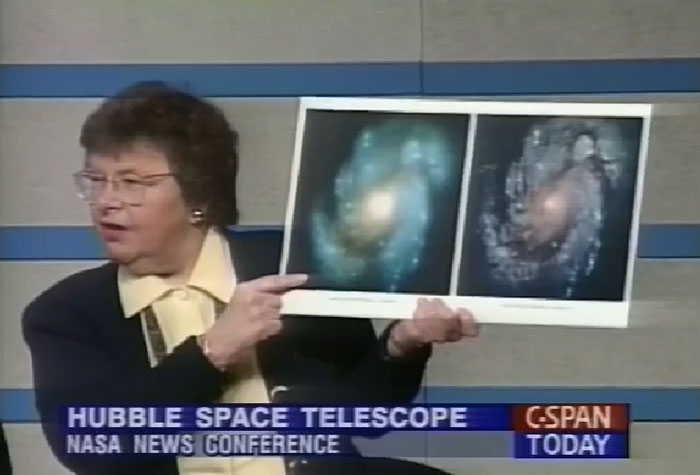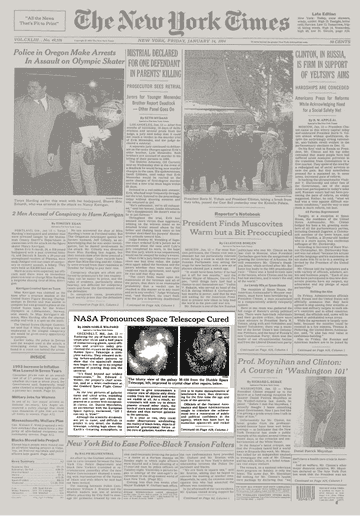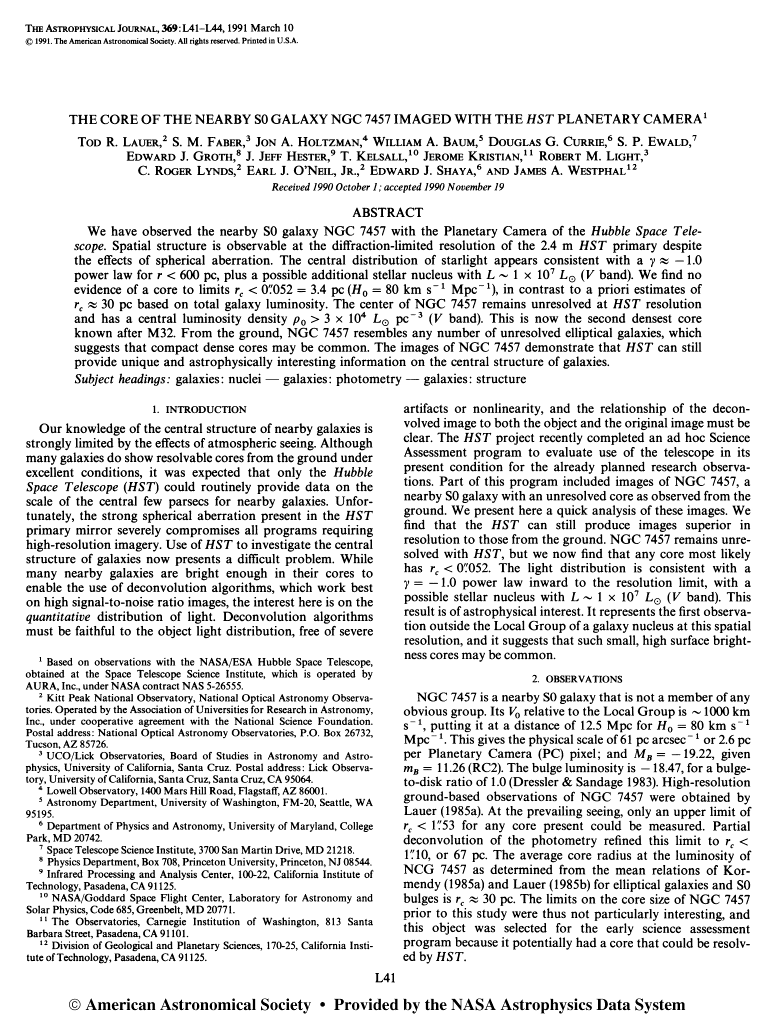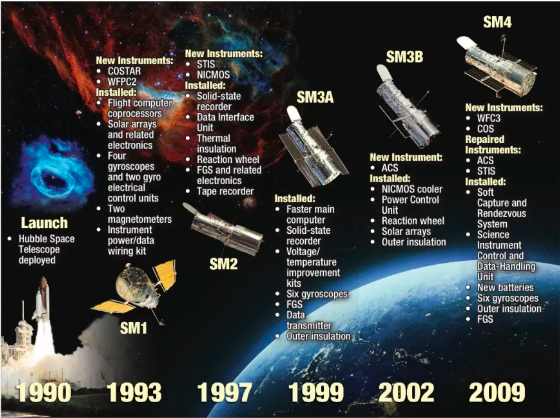Hubble Telescope: Viewing the Final Frontier
Hubble Succeeds
Hubble Repair, 1993, UK News.
In 1993, Hubble was restored to successful operation by correcting the failed mirrors. The scientific community celebrated as the Hubble telescope became a reality.
Correcting Hubble optics broke frontiers in both science and technology.
Dr. John Gallagher, Member of the Hubble Space Telescope WFPC2 Instrument Team, 2023, Personal Interview.

Senator Mikulski, 1994, C-SPAN.
In a 1994 press conference, Senator Mikulski shared before and after NASA photos depicting the success of the mirror correction. Proving to be a trailblazer, the telescope captured images which changed our understanding of the universe.
"The trouble with Hubble is over."
-Barbara Mikulski, Maryland State Senator

Hubble Cured, 1994, New York Times.
In January, 1994, the New York Times pronounced Hubble "cured." Public perception changed as Hubble provided high quality images of our solar system. As quality data was produced, Hubble was now considered a successful investment.
"It's been an excellent value for our money."
-Steve Beckwith, Space Telescope Science Institute
Preconceived ideas were challenged by Hubble’s data. The first research article, "The Core of the Nearby SO Galaxy NGC Space 7457 Imaged with the HST Planetary Camera," was published in the Astrophysical Journal in March of 1991. Once Hubble crossed this scientific frontier, many other discoveries and advancements continued.
"This result is of astrophysical interest. It represents the first observation outside the Local Group of a galaxy nucleus at this spatial resolution, and it suggests that such small, high surface brightness cores may be common."
- The Core of the Nearby SO Galaxy NGC Space 7457 Imaged with the HST Planetary Camera

First Hubble Research Paper, 1991, American Astronomical Society.

Hubble Servicing Missions Timeline, 2023, New Space Economy.
Flexibility and adaptability in the Hubble design caused it to successfully cross new astronomical frontiers longer than expected. The design allowed it to be serviced, improving the telescope's functionality. Today Hubble is collecting groundbreaking data.
"When I was a young kid, black holes were a fantasy, something on 'Star Trek'. Hubble has not only proved that supermassive holes exist; it has taken science fiction to reality."
-Ed Weiler, Associate Administrator, Science Mission Directoriate of NASA
Short Term Impact